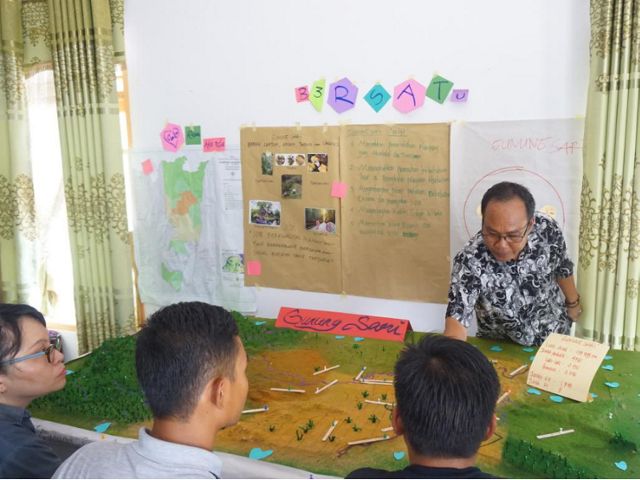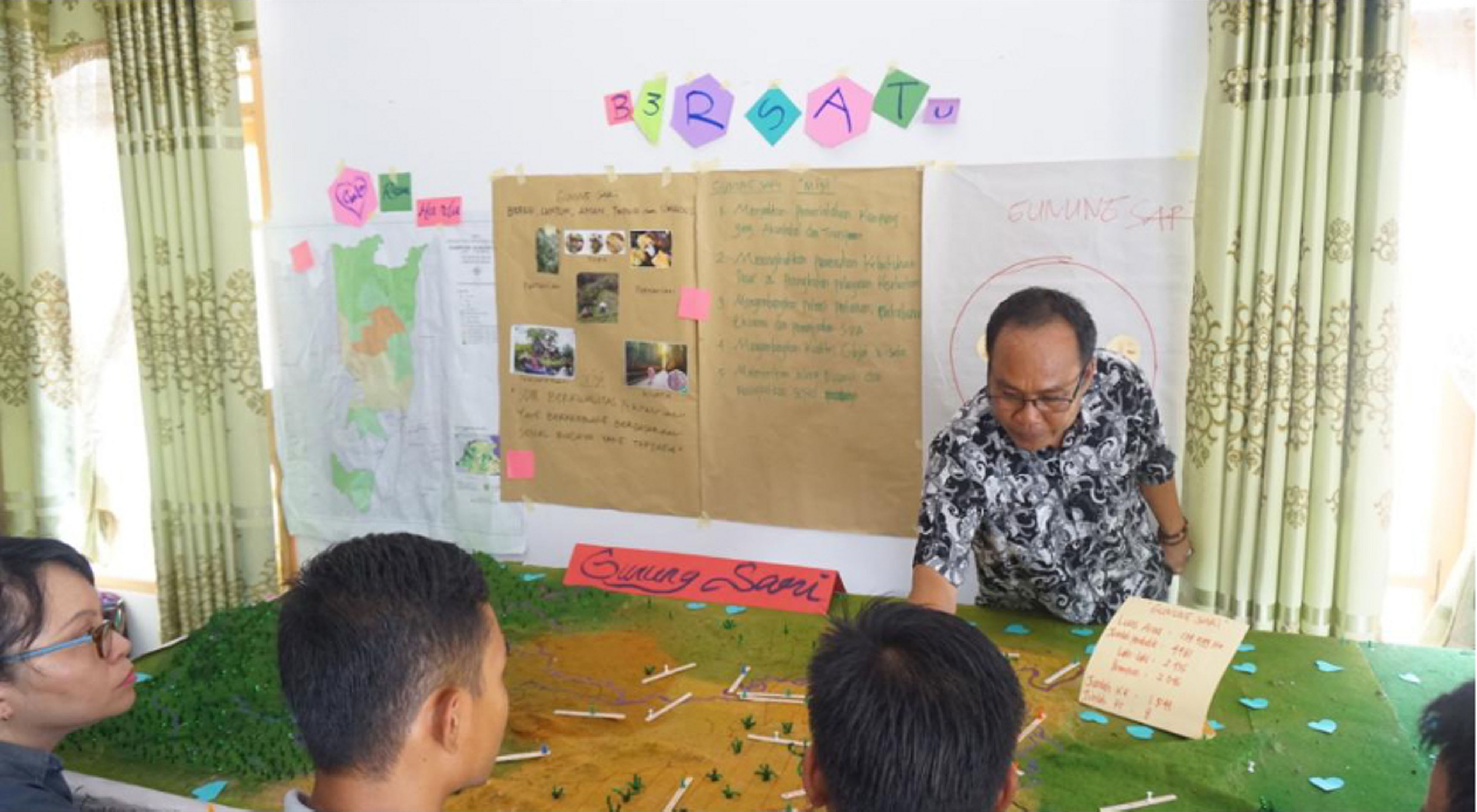There is no doubt that oil palm plantations around the villages in the Berau district have brought modernization to the communities. For example, in the Segah subdistrict, private companies have opened access to the City of Tanjung Redeb, of which almost 100 per cent are now accessible through land routes. Likewise, village infrastructures have also improved. For example, electricity is available for 24 hours. In addition, communities can access clean water from the state-owned water utility company PDAM and the Segah River. Better infrastructure also enables telecommunication operators to set up cell towers (BTS) and makes it possible for the communities to get better access to the Internet network.
In the Segah subdistrict, oil palm plantations surrounded two villages: Gunung Sari and Long Ayan. The KLK (Kuala Lumpur Kepong Berhad) Group manages the oil palm plantations in Gunung Sari village. It is the parent company of three palm oil corporations operating in the area, which are PT Hutan Hijau Mas (HHM), PT Satu Sembilan Delapan (PT 198) and PT Malindo Mas Perkebunan (PT MMP).
While the palm oil companies with land concessions in the Long Ayan village are: PT Agrindo Sukses Sejahtera, with a total area of 2,930 hectares; PT Berau Karetindo Lestari, with a total area of 2,650 hectares; PT Mulia Inti Persada, with a total area of 3,744 hectares; and PT Natura Pasifik Nusantara with a total area of 2,560 hectares.
Having to co-exist with oil palm plantations, the residents of Gunung Sari and Long Ayan villages need to maintain a balance between economic and social needs and environmental sustainability. This need should be the basis for designing proper development and spatial planning. Therefore, the residents need facilitation to create a village development plan by implementing the Inspiring Community Actions for Change (SIGAP) approach.

SIGAP Village in Oil Palm Plantation Sector
The Nusantara Nature Conservation Foundation (YKAN) and the Foundation for Ummah Resources Development and Improvement (YP2SU) implemented the SIGAP approach in the oil palm plantation sector during the 2017-2019 period. The program selected two villages in the Segah subdistrict. One of the considerations was the region’s vast expanse of oil palm plantations—managed by private companies and the community.
As a result of the 14-month facilitation, the Gunung Sari village now has (1) an assets and potentials map, (2) a land-use planning map, (3) a 3D (three-dimensional) map constructed based on a village-wide consensus, (4) Joint vision-mission, and (5) Village Mid-Term Development Plan (RPJMK). In addition, the village also succeeded in establishing approximately 3,711 hectares of land as a local conservation area.
The villagers also founded a Civil Society Organisation, Bumi Banua Lestari, as a forum to manage performance-based incentive funds. The organization can then utilize the fund to manage the natural resources in the area. This funding is carried out based on a performance-based incentives agreement.
Regarding the Long Ayan village, to improve its governance, the community now owns a 3-Dimensional map that incorporates almost all the village’s assets. The residents and village officials had also outlined a participatory RPJMK. Regarding conservation, they also inventoried the biodiversity and established a patrol system for approximately 251 hectares of the conservation area. To improve the village economy, villagers received facilitation in the cultivation of rhizomes, citronella grass, and fruit trees and economic data collection.


